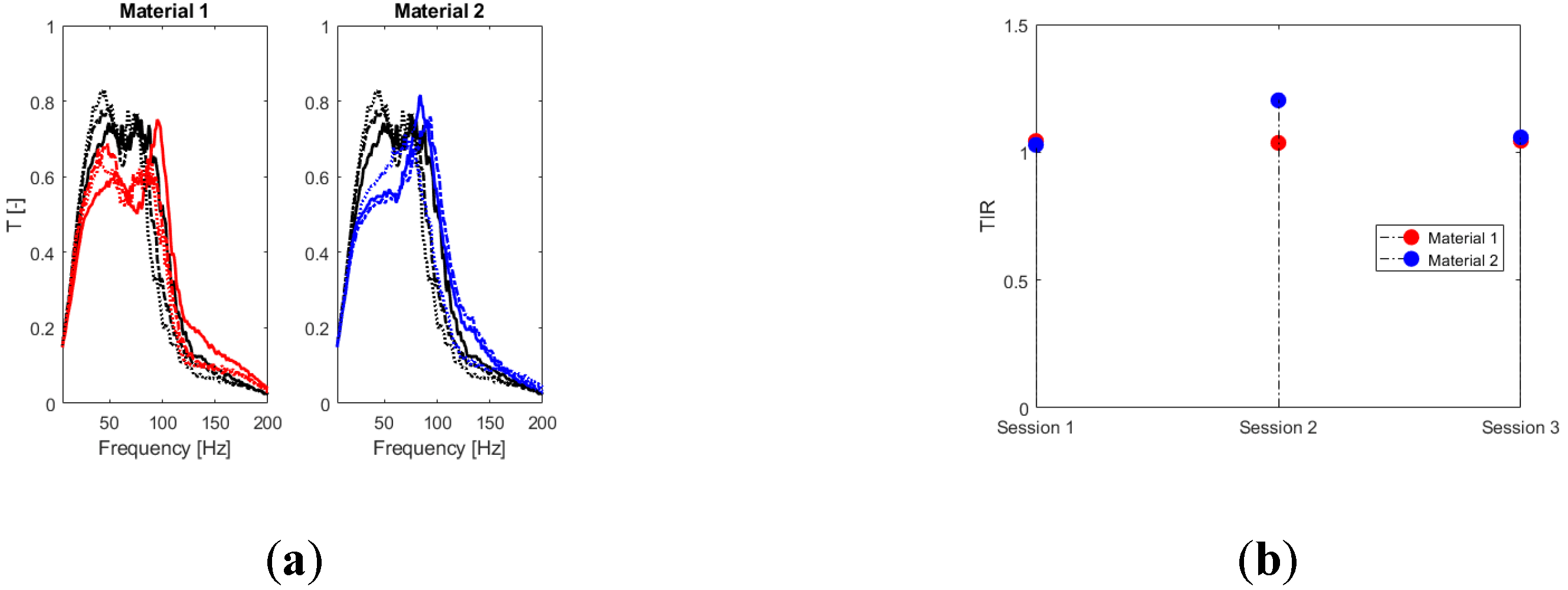Methods for the Laboratory Evaluation of HAV-Related Comfort in Cyclists †
Abstract
:1. Introduction
2. Experimental Setup
3. Vibration Stimulus
4. Measurement Chain
5. Metrics
6. Case Study
7. Conclusions
Author Contributions
Funding
Institutional Review Board Statement
Informed Consent Statement
Data Availability Statement
Acknowledgments
Conflicts of Interest
References
- Chiementin, X.; Rigaut, M.; Crequy, S.; Bolaers, F.; Bertucci, W. Hand-arm vibration in cycling. JVC/J. Vib. Control 2013, 19, 2551–2560. [Google Scholar] [CrossRef]
- Tarabini, M.; Saggin, B.; Scaccabarozzi, D. Whole-body vibration exposure in sport: Four relevant cases. Ergonomics 2015, 58, 1143–1150. [Google Scholar] [CrossRef] [PubMed]
- Akuthota, V.; Plastaras, C.; Lindberg, K.; Tobey, J.; Press, J.; Garvan, C. The Effect of Long-Distance Bicycling on Ulnar and Median Nerves: An Electrophysiologic Evaluation of Cyclist Palsy. Am. J. Sports Med. 2005, 33, 1224–1230. [Google Scholar] [CrossRef] [PubMed]
- Capitani, D.; Beer, S. Handlebar palsy—A compression syndrome of the deep terminal (motor) branch of the ulnar nerve in biking. J. Neurol. 2002, 249, 1441–1445. [Google Scholar] [CrossRef] [PubMed]
- Kirkwood, L.A.; Taylor, M.D.; Ingram, L.A.; Malone, E.; Florida-James, G.D. Elite mountain bike enduro competition: A study of rider hand-arm vibration exposure. J. Sci. Cycl. 2019, 8, 18–25. [Google Scholar] [CrossRef]
- Lépine, J.; Champoux, Y.; Drouet, J.M. Road bike comfort: On the measurement of vibrations induced to cyclist. Sport. Eng. 2014, 17, 113–122. [Google Scholar] [CrossRef]
- Drouet, J.M.; Covill, D.; Duarte, W. On the exposure of hands to vibration in road cycling: An assessment of the effect of gloves and handlebar tape. Proceedings 2018, 2, 213. [Google Scholar] [CrossRef] [Green Version]
- Tarabini, M.; Mauri, N.; Gaudio, I.; Cinquemani, S.; Moorhead, A.P.; Bongiovanni, R.; Feletti, F. Hand-arm vibration in motocross: Measurement and mitigation actions. Muscles Ligaments Tendons J. 2020, 10, 280–289. [Google Scholar] [CrossRef]
- Vanwalleghem, J.; De Baere, I.; Loccufier, M.; Van Paepegem, W. Sensor design for outdoor racing bicycle field testing for human vibration comfort evaluation. Meas. Sci. Technol. 2013, 24, 095002. [Google Scholar] [CrossRef]
- Borg, E.; Borg, G. A comparison of AME and CR100 for scaling perceived exertion. Acta Psychol. 2002, 109, 157–175. [Google Scholar] [CrossRef] [PubMed]


Disclaimer/Publisher’s Note: The statements, opinions and data contained in all publications are solely those of the individual author(s) and contributor(s) and not of MDPI and/or the editor(s). MDPI and/or the editor(s) disclaim responsibility for any injury to people or property resulting from any ideas, methods, instructions or products referred to in the content. |
© 2023 by the authors. Licensee MDPI, Basel, Switzerland. This article is an open access article distributed under the terms and conditions of the Creative Commons Attribution (CC BY) license (https://creativecommons.org/licenses/by/4.0/).
Share and Cite
Marelli, S.; Tarabini, M. Methods for the Laboratory Evaluation of HAV-Related Comfort in Cyclists. Proceedings 2023, 86, 1. https://doi.org/10.3390/proceedings2023086001
Marelli S, Tarabini M. Methods for the Laboratory Evaluation of HAV-Related Comfort in Cyclists. Proceedings. 2023; 86(1):1. https://doi.org/10.3390/proceedings2023086001
Chicago/Turabian StyleMarelli, Stefano, and Marco Tarabini. 2023. "Methods for the Laboratory Evaluation of HAV-Related Comfort in Cyclists" Proceedings 86, no. 1: 1. https://doi.org/10.3390/proceedings2023086001





